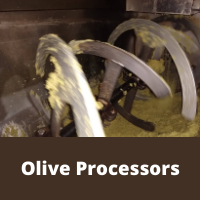A plan that zones crops according to water needs in the farmland beyond Adelaide’s northern suburbs could save water, boost production and expand the olive industry.
Under the Horticulture Blueprint for 2030, growers will relocate farms north of Mallala to form various pockets of cropping varieties, with a close focus on local conditions in each zone.
The Blueprint provides a vision for the horticulture industry on the Adelaide Plains and identifies several areas, which it states that if correctly addressed, could lead to increased horticultural output, more employment, and growth in the South Australian economy.
The document states that significant proportions of the Adelaide Plains have potential for expansion of the olive industry and that the viability of the expansion needs to be investigated.
The Adelaide Plains horticulture industry is concentrated in the area around Virginia and Angle Vale, but is expanding into the area around Two Wells. The majority of horticulture activity includes greenhouse crops and field production of vegetables including potatoes, carrots, brassica and bunch crops as well as almonds, olives and winegrapes. There are many value-adding businesses, packing or processing produce from the region and other areas of South Australia.
The planned overhaul of the horticultural industry is in response to the northern expansion of Adelaide’s metropolitan area which is causing many current growers to consider shifting further north.
Under the Blueprint production was expected to double by 2030. The plan outlines plans for a doubling of the industry’s production capacity, leading to a significant boost in horticultural exports and thousands more jobs.
Post-harvest manager with the Virginia Horticulture Centre, Victoria Richardson, says this will have significant benefits for water management.
“Olives have different water requirements to carrots, carrots have different water requirements to tomatoes, so if they’re actually all in a belt it makes it a lot more effective to manage,” she said.
“It’s about being proactive as an industry and recognising that yes we will need to shift, but how can we do that so it really benefits our industry in the long term rather than just waiting for it to happen and then dealing with it.”
The Blueprint states the Adelaide Plains has a number of available water sources for irrigation and the current source of water is sufficient for current needs of horticulture, and provides potential for some growth.


